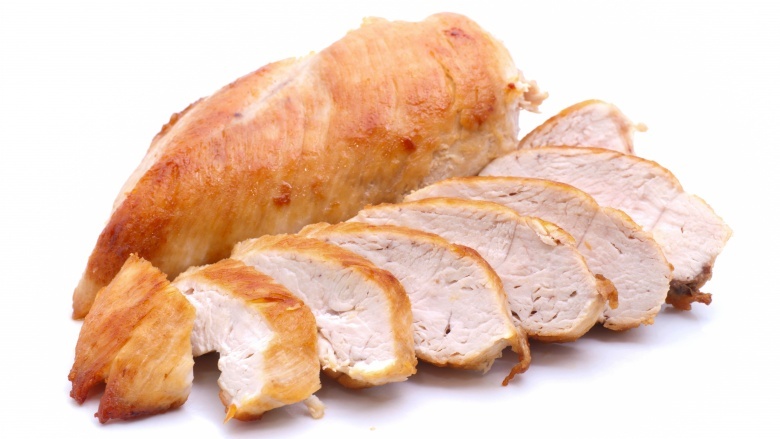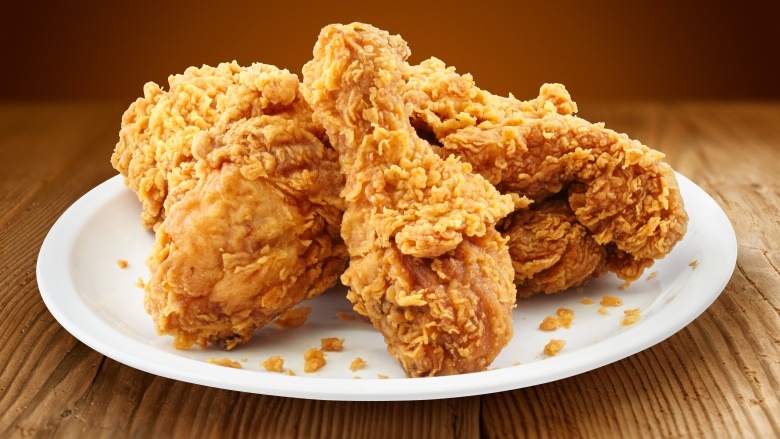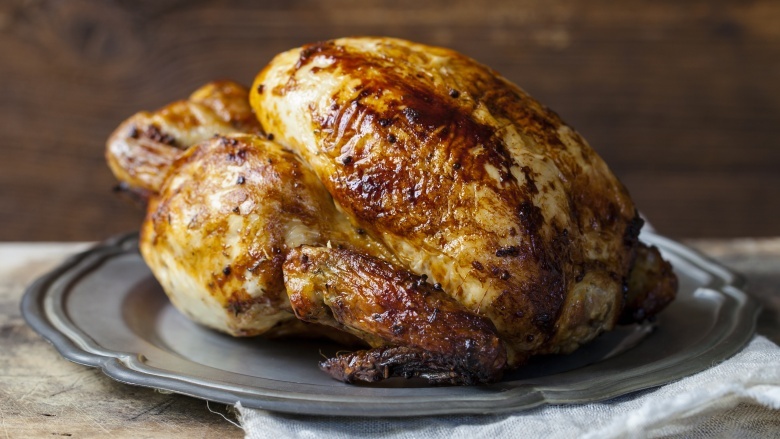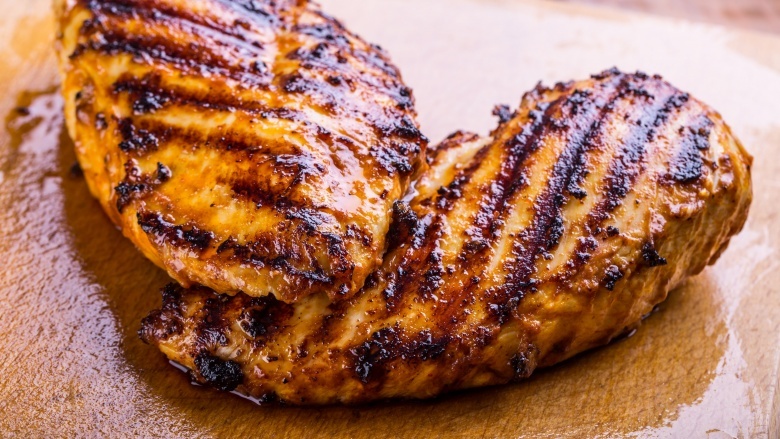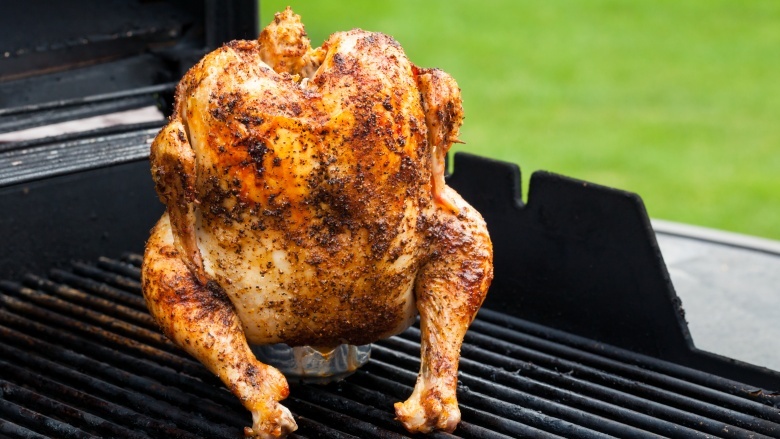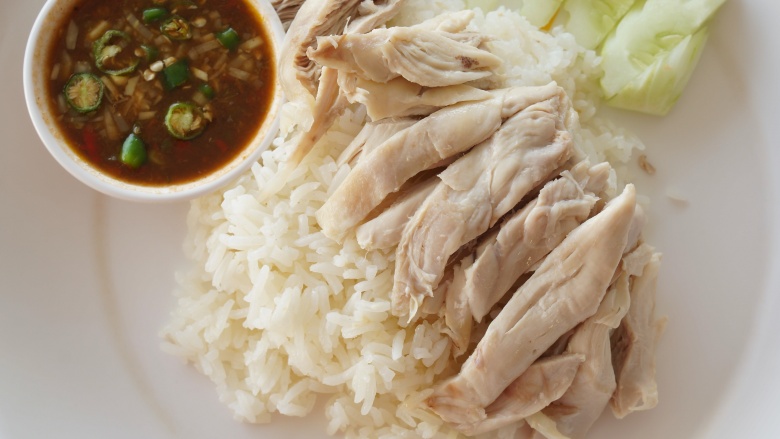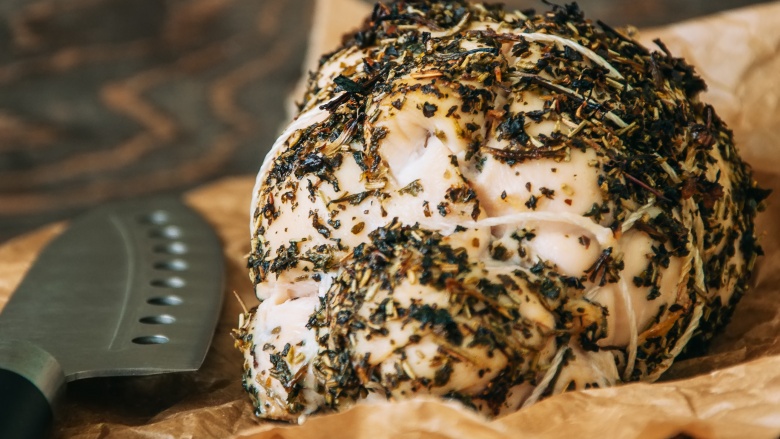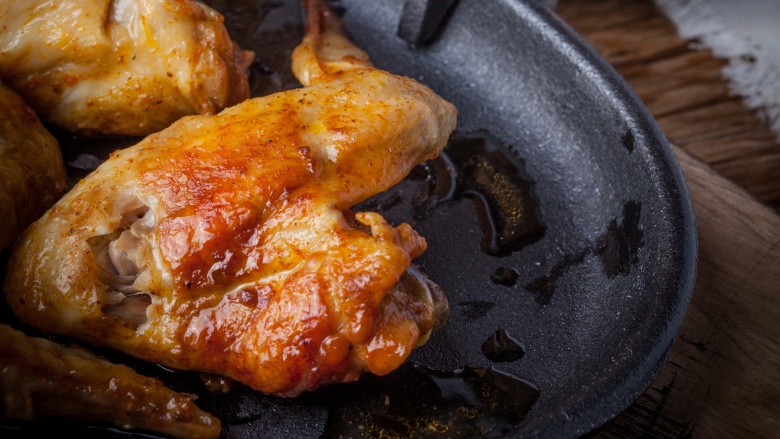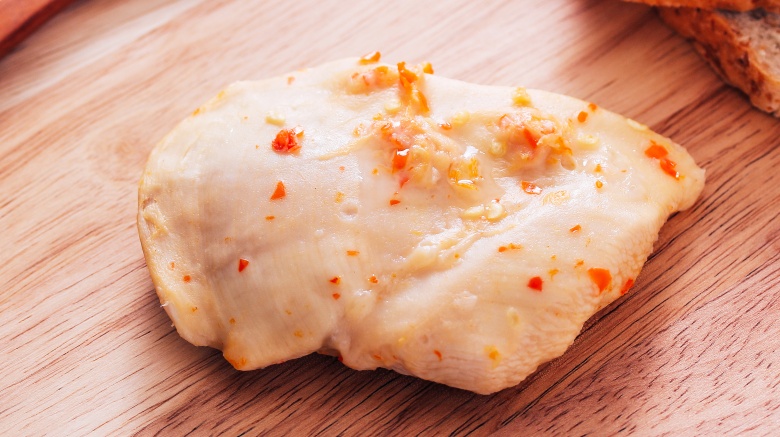How To Cook Perfect Chicken 8 Different Ways
When cooking chicken, one rule comes above them all: always heat the chicken to at least 165 degrees. Of course, that is important from a not-getting-food-poisoning perspective, but if you also care about the OMG-this-tastes-so-amazing perspective, then you should also remember that while 165 degrees is the minimum temp to be safe, it is also close to the maximum temp for compliments. If you go too far over that, the meat will be dry. This balance between safety and tasty can only be reliably achieved if you can accurately determine the internal temperature of the meat. If you don't own a meat thermometer, GET ONE! Now read on to find out how to cook the perfect chicken.
Fried chicken
No matter which recipe you take a fancy to, they will pretty much always work out better if you brine the meat before you cook it. Brining can be as simple or as complicated as you like, from the basic salty water bath in the fridge for half an hour, to the more-involved-but-totally-worth-it buttermilk brine. No matter what you choose, it will definitely add incomprehensible grunts of delight to your guests' expressions of pleasure.
For the perfect fried chicken, you need to start with meat at room temperature. If it's too cold, the temperature of the oil will drop and the chicken won't fry properly. It doesn't matter which piece of the chicken you choose: all of it can be fried, but make sure it is dry before you start the next bit. According to Bon Appétit, you should dip the chicken into flour, then egg or buttermilk, then back into flour. Cook in a cast iron pan with deep sides using an oil with a high smoke point, like canola. The oil should be kept at or near 350 degrees, and you should turn the chicken a few times to ensure it cooks evenly on all sides. It will be done when your meat thermometer (which you're going to buy, remember?) says it's done, usually around 15 minutes. Don't count on it lasting that long on the plate, though.
Roast chicken
There's something very satisfying about roasting a whole chicken for lunch or dinner ... or breakfast. You're an adult; you do you. Perhaps it's part of a "happy family" cultural stereotype that we can all connect to, even if we didn't all experience it. But there's no reason you can't make it happen because it's probably one of the easiest recipes to get right.
Start with the best chicken you can afford. After removing the giblets, season with salt and pepper, then rub with oil. Place the chicken in a baking tray in the middle of an oven preheated to 450 degrees. Fine Cooking recommends starting the chicken with the breast side down for the first 30 minutes of cooking time, which allows the juices to settle into the breasts. After 30 minutes, flip the chicken and continue cooking until your thermometer approves (165 degrees). Cover and let sit for 15 minutes before serving with some delicious roasted veg, just like your kids will say you used to make.
Grilled chicken
To achieve grilled chicken perfection, you must first get rid of any stress in your body and any lumps in your chicken. To do this, lay your chicken out on a cutting board and beat with something flat and heavy (like a jar) until an even thickness has been mostly achieved. Add seasoning to your already-brined meat, then place on a clean and oiled grill rack over medium heat. Close the lid. Turn occasionally. Enjoy the weather and drink some beer.
It is possible to grill almost any cut of chicken—even whole chickens if you're prepared to spatchcock them first. If you do, you get chef props for grilling a whole chicken and the right to use the word "spatchcock" in polite company without looking juvenile.
If you plan to add a barbecue or teriyaki sauce to the chicken while it cooks, the best time is toward the end. It will have a chance to glaze onto the surface, but it won't burn and ruin the flavor.
When your thermometer gives you 165 reasons why the meat is done, you may remove it from the heat. Let it sit, then serve with a suave expression of competence and satisfaction plastered across your face like the barbecue sauce soon will be.
Beer-can chicken
Watching a chicken ride a beer can all the way to cooking perfection is something that should be seen to be believed. It does look slightly risqué, and the actual benefits of exposing the poor clucker to the most humiliating cooking method on record are not entirely accepted. However, if you make it, you will undoubtedly become a legend in your fantasy gator wrestling league. So here's how you do it.
Check to see if your grill will accommodate an upright bipedal chicken on a can, and make adjustments to get it to fit if necessary. Light the coals if you need to. According to Epicurious, beer-can chicken works best with indirect heat, so heap the coals on one side, or don't light all of the burners if you use propane. Season the chicken however you wish, being careful to wash all hands and surfaces that make contact with raw chicken. Open a can of beer and "remove" half the contents, then carefully "seat" the chicken onto the can.
Place the seated chicken on the grill over the cool side. It should be possible to balance it on the can and its two legs, but some creative problem solving might be required to keep it upright. Cover and cook on high for as long as it takes to get the meat over 165 degrees, which could be anything from 45 minutes to over an hour depending on the size of the chicken. When it hits temperature, remove from the heat and let it rest for 15 minutes. Use this time to tape a miniature American flag to its outstretched wing. Then, with a fanfare of steel air guitars, parade your masterpiece through the awestruck crowds. Finish by tearing it apart and eating it with your fingers.
Poached chicken
Poaching is one of our favorite ways to prepare chicken, especially when we need some cooked protein for a quick weeknight dinner. Think robust salads, savory tacos, next-level sandwiches, and satisfying last-minute soups. Poaching chicken for the next day's work lunch can easily become a habit because this technique of cooking food in a small amount of liquid has a lot going for it. In addition to being ridiculously easy and fast, it's pretty darn hard to mess up. The result is consistent: tender, juicy chicken.
While you can certainly poach bone-in chicken pieces with the skin on, this method of cooking works best with boneless, skinless chicken breasts. While grilling, roasting, or frying caramelizes the skin for enhanced flavor, poaching doesn't bring anything extra to the chicken. Moreover, if you plan to strain and reserve your poaching water for making soups, the skin leaves the liquid kind of greasy. Yuck!
You're probably wondering how poaching chicken works and just exactly how foolproof it really is. Simply place a piece of boneless, skinless chicken breast in a medium saucepan (or a large one, depending on how big the cutlet is) and add water until the liquid just covers the meat. At this point, feel free to add aromatics to the saucepan if you like — think bay leaf, sliced garlic, ginger, and the like. Simmer over low heat until the chicken is cooked through and no longer pink inside. The low temp and moist heat gets the job done in a gentle manner, rendering perfectly cooked chicken every time.
Need a recipe to get you started? Try this one from Cookin Canuck. It's basic and totally adaptable.
Baked chicken
If you've always thought of boneless chicken breasts as boring, it's time to reconsider! Sure, thighs lay claim to naturally fabulous dark meat flavor and skin-on parts boast complexity and desirable fattiness, but that doesn't mean we shouldn't show the breasts some love. Once you start dabbling in baking boneless, skinless chicken breasts, you'll realize a good meal is always within reach when you have access to an oven.
Since boneless, skinless chicken breasts are inherently lean, they are finicky to cook and dry out very easily. When you're baking chicken in the oven, it is essentially cooking in an enclosed space that provides a consistent heat level. This is a great thing, but it can also lead to overcooking the exterior of the chicken while leaving the inside raw. Luckily, by doing a couple of simple prepping steps, you can maximize the power of the oven without drying out your chicken.
The easiest and best way to bake chicken? Preheat the oven to 400 degrees. Grease your baking dish generously with olive oil, canola oil, or butter. Doing so prevents your chicken from sticking to the bottom of the pan during cooking. Pat the chicken breasts dry with a paper towel, then season them as you like. Arrange the chicken in a single layer in the pan. Lightly grease one side of a sheet of parchment paper and place it over the chicken, greased-side down, tucking in the edges. This step helps to keep the chicken moist during cooking. Transfer the pan to the middle rack of the oven and bake until the chicken is cooked through and no longer pink inside, 30-40 minutes. That's it!
Here's an easy-to-follow recipe from Epicurious with simple seasoning ideas for baking chicken in parchment.
Pan-roasted chicken
When the air starts to get crisp enough that you need a wool hat to go outside, you can find us pan-roasting chicken at least two nights a week. This stovetop-plus-oven method of cooking poultry inevitably makes your house smell like a rustic French cottage in the best of ways. It's the fragrance of good home cooking. For fall and winter, you'll love the irresistible and comforting results of pan-roasting chicken. It is without a doubt one of the most aromatic, mouthwatering techniques for dealing with this common bird.
Pan-roasting is a two-step process that takes you from the stovetop to the oven — three steps if you count the trip to your mouth. Preheat the oven to 475 degrees. The first step is to sear your chicken skin-side down in a smoking hot oven-proof skillet (cast-iron is best) with a little oil to brown the skin and lock in delicious flavor. Next, transfer the skillet to the oven to continue cooking, flipping about five minutes before the chicken is finished cooking. You will be rewarded with crisp, caramelized skin and tender, flavorful meat.
Check out Bon Appetit's easy pan-roasted chicken recipe to get all the deets on your new go-to method for prepping chicken on cold days.
Boiled chicken
If you're looking for a healthy way to cook lean chicken breasts, you might want to consider boiling. Boneless, skinless chicken breasts are naturally low in fat and calories anyway, but boiling them can really help you maintain your clean eating habits. Like poaching, boiling doesn't require adding any extra cooking oils or butter, which means you can enjoy the protein and none of the excess fat. Boiled chicken is ideal for adding to salads, enjoying over grains, or heating in soups. Boiled chicken is great when you're training for a marathon. (Not that we've run them, but still.) You can still enjoy boiled chicken for its ease and versatility.
It's hard to think of an easier way to cook chicken than by boiling it. Simply place the chicken in a saucepan and cover it with 2-3 inches of cold water. Cover and bring the water to a boil over high heat. Once the water is boiling, reduce the heat to medium high and cook until the chicken is no longer pink inside, about 10 minutes. Larger pieces may require more time.
Since this way of cooking chicken is such a cinch, you don't even need a recipe. We trust you.
